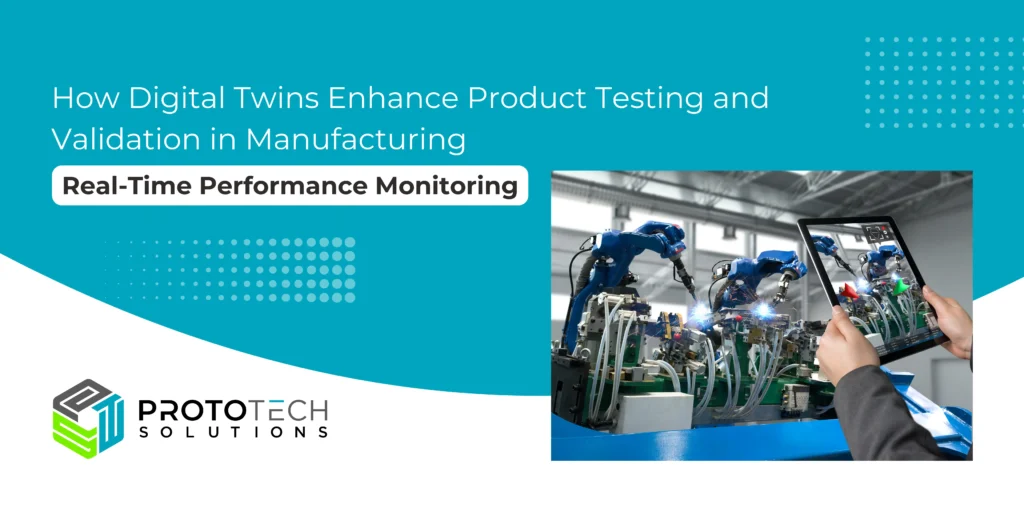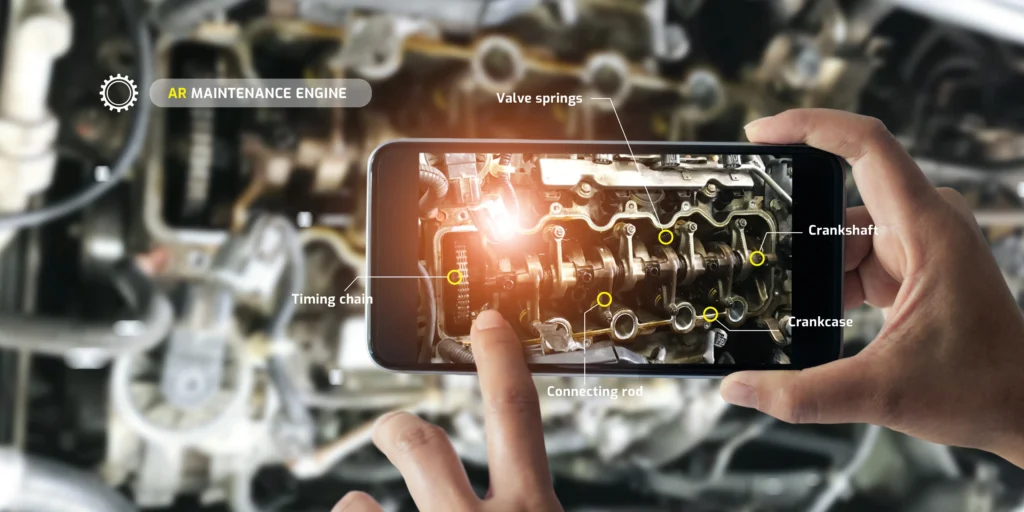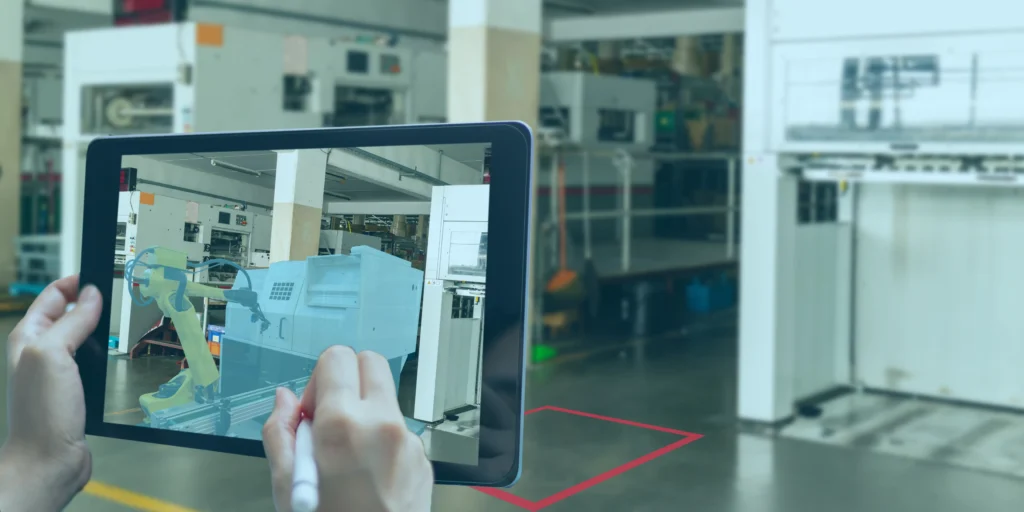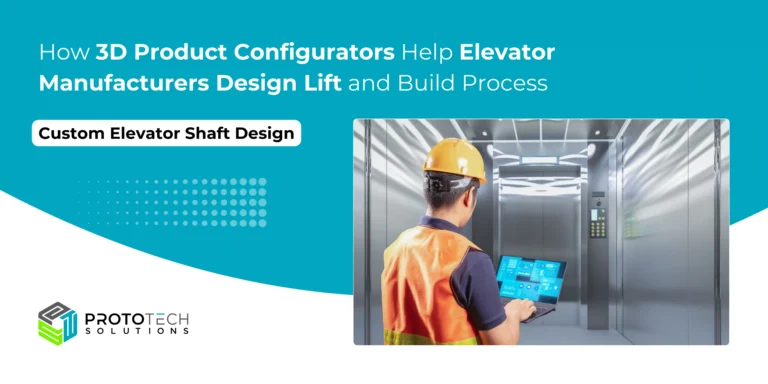How Digital Twins Enhance Product Testing and Validation in Manufacturing

Industry 4.0 aims to optimize manufacturing processes through the use of advanced technologies such as IoT, AI, machine learning, and robotics. Digital twins serve as virtual replicas of physical assets and processes, allowing manufacturers to simulate and analyze different production scenarios in real time. This enables continuous improvement, efficiency gains, and cost reductions in manufacturing operations. Based on recent market survey reports by “Markets And Markets,” the revenue of the digital twin market was estimated to be USD 10.1 billion in 2023 and is projected to reach USD 110.1 billion by 2028, with a compound annual growth rate (CAGR) of 61.3% from 2023 to 2028.
The advent of digital twin technology is revolutionizing the manufacturing industry, offering unprecedented capabilities in product testing and validation. A digital twin is a virtual replica of a physical product, system, or process that enables manufacturers to simulate, analyze, and optimize their real-world counterparts. By leveraging digital twins, companies can enhance product testing and validation, leading to improved efficiency, reduced costs, and higher-quality products. This blog post delves into the various ways digital twins are transforming the manufacturing landscape and highlights the benefits they bring to product testing and validation.
Understanding Digital Twins
Digital twins are virtual models of physical objects, processes, or systems that are designed to accurately reflect their real-world counterparts. They use real-time data from sensors, or IoT devices on the physical entity to simulate its behavior and monitor its operations. Digital twins span the entire lifecycle of the physical object, from initial design and engineering to production, operation, and even end-of-life.
This continuous feedback loop allows manufacturers to monitor performance, predict failures, and make informed decisions based on accurate and up-to-date information. A digital twin, as the name suggests, is a virtual replica of physical spaces such as cities, offices, shops, hospitals, and educational institutions. These virtual replicas can be utilized for monitoring, integration, maintenance, and testing purposes, offering a comprehensive way to manage and optimize real-world environments.
- Accelerate production: Digital twins can be used to simulate and test products and facilities before they are physically built, speeding up the development process.
- Enable remote monitoring: The virtual nature of digital twins allows for remote monitoring and control of physical assets, reducing the need for on-site personnel.
- Enable predictive capabilities: By monitoring sensor data, digital twins can identify issues and faults before they occur, allowing for proactive maintenance.
The Role of Digital Twins in Product Testing

1. Virtual Prototyping
One of the most significant advantages of digital twins is the ability to create virtual prototypes. Traditional prototyping involves building physical models, which can be time-consuming and expensive. Digital twins enable manufacturers to develop and test virtual prototypes, drastically reducing the time and cost associated with physical prototyping. By simulating various scenarios and conditions, manufacturers can identify potential issues early in the design phase and make necessary adjustments before moving to production.
2. Real-Time Performance Monitoring
Digital twins provide real-time monitoring of product performance by collecting data from sensors embedded in the physical product. This data is transmitted to the digital twin, allowing manufacturers to monitor the product’s behavior under different conditions. Real-time performance monitoring helps identify deviations from expected performance, enabling manufacturers to address issues promptly and ensure the product meets quality standards.
3. Predictive Maintenance
Maintenance is a critical aspect of product testing and validation. Digital twins facilitate predictive maintenance by analyzing data from the physical product to predict potential failures and maintenance needs. By identifying issues before they occur, manufacturers can perform maintenance proactively, reducing downtime and extending the product’s lifespan. Predictive maintenance also helps optimize maintenance schedules, ensuring that products are serviced only when necessary, thus saving costs and resources.
Enhancing Validation with Digital Twins

1. Simulation and Stress Testing
Digital twins enable comprehensive simulation and stress testing of products in a virtual environment. Manufacturers can simulate various operating conditions, including extreme scenarios that would be challenging to replicate in physical tests. This allows for thorough validation of the product’s performance, durability, and reliability. By identifying weaknesses and potential failure points, manufacturers can make design improvements to enhance the product’s overall robustness.
2. Compliance and Regulatory Testing
Compliance with industry standards and regulations is crucial in manufacturing. Digital twins streamline the compliance testing process by simulating regulatory tests in a virtual environment. Manufacturers can ensure that their products meet all necessary standards before undergoing physical testing, reducing the risk of non-compliance and associated costs. Digital twins also facilitate documentation and reporting, making it easier to demonstrate compliance with regulatory authorities.
3. Customer Feedback Integration
Customer feedback is invaluable for product improvement. Digital twins enable manufacturers to integrate customer feedback into the validation process. By simulating customer usage scenarios and analyzing the feedback data, manufacturers can identify areas for improvement and make necessary adjustments. This iterative process ensures that the final product aligns with customer expectations and delivers a superior user experience.
Benefits of Using Digital Twins in Manufacturing

1. Cost Savings
One of the most significant benefits of digital twins is cost savings. By reducing the need for physical prototypes, manufacturers can save on materials, labor, and production costs. Additionally, predictive maintenance and optimized testing processes minimize downtime and extend product lifespans, further contributing to cost efficiency.
2. Faster Time-to-Market
Digital twins accelerate the product development cycle by enabling rapid prototyping and testing. Manufacturers can quickly iterate on designs, identify and resolve issues, and bring products to market faster. This agility is crucial in today’s competitive landscape, where speed and innovation are key to staying ahead.
3. Improved Product Quality
The ability to perform comprehensive simulations and real-time monitoring ensures that products meet the highest quality standards. Digital twins enable manufacturers to identify and address potential issues early in the development process, resulting in higher-quality products that perform reliably in real-world conditions.
4. Enhanced Collaboration
Digital twins facilitate collaboration between different teams and stakeholders in the manufacturing process. Engineers, designers, and production teams can work together in a virtual environment, sharing insights and making data-driven decisions. This collaborative approach enhances communication, reduces misunderstandings, and ensures that everyone is aligned toward common goals.
5. Sustainability
Digital twins contribute to sustainability efforts by reducing waste and optimizing resource usage. Virtual prototyping and testing eliminate the need for multiple physical prototypes, saving materials and reducing environmental impact. Predictive maintenance also extends the lifespan of products, reducing the need for replacements and minimizing electronic waste.
Case Studies: Real-World Applications of Digital Twins
1. Siemens
Siemens, a global leader in automation and manufacturing, has successfully implemented digital twins across various industries. In the automotive sector, Siemens used digital twins to optimize the design and testing of electric vehicle batteries. By simulating different charging and discharging scenarios, Siemens identified potential performance issues and improved battery efficiency. This resulted in longer battery life and enhanced overall vehicle performance.
2. General Electric (GE)
General Electric (GE) has leveraged digital twins to enhance the testing and validation of jet engines. GE created digital twins of their engines, incorporating data from sensors to monitor performance in real time. This enabled GE to predict maintenance needs, optimize engine performance, and reduce downtime. The use of digital twins also facilitated compliance with aviation regulations, ensuring that engines met the highest safety standards.
3. Boeing
Boeing has utilized digital twins to improve the testing and validation of aircraft components. By creating digital replicas of critical parts, Boeing simulated various stress scenarios to identify potential failure points. This allowed Boeing to make design improvements and ensure the reliability and safety of their aircraft. Digital twins also enabled Boeing to streamline compliance testing and reduce the time required for regulatory approvals.
Conclusion
Digital twins are transforming the manufacturing industry by enhancing product testing and validation processes. Through virtual prototyping, real-time monitoring, predictive maintenance, and comprehensive simulations, digital twins enable manufacturers to create higher-quality products, reduce costs, and accelerate time-to-market. The benefits of digital twins extend beyond individual products, fostering collaboration, sustainability, and continuous improvement. As technology continues to evolve, the integration of AI, expanded IoT connectivity, and enhanced visualization will further amplify the impact of digital twins, driving innovation and efficiency in manufacturing. Embracing digital twin technology is not just a competitive advantage but a necessity for manufacturers striving to stay at the forefront of the industry.
Embrace the Future of Business with Digital Twin Technology Solutions

Step into the world of smart business with digital twin technology. By leveraging digital twin development solutions, you can make informed, data-driven decisions that lead to superior outcomes and enhanced performance. Transform your working ecosystem with the advanced, tech-powered services of ProtoTech Solutions, the industry’s leading digital twin manufacturing company.
At ProtoTech Solutions, we empower businesses with digital twin technology to create more efficient operations and innovative strategies. Build a digital twin using the latest advancements and revolutionize your approach to analytics, insights, and decision-making.
We are the leading digital twin development service provider in India, we offer cutting-edge solutions tailored to various industries, including Organizations, Hospitals, Manufacturing, Real Estate, Infrastructure, and Airports. Elevate your business with our exceptional digital twin platforms that drive growth and deliver tangible results. Embrace the future of technology with ProtoTech Solutions and unlock new potential in your industry.






